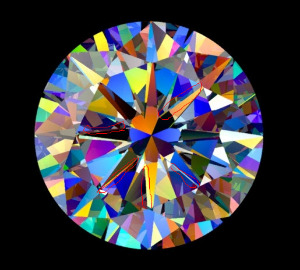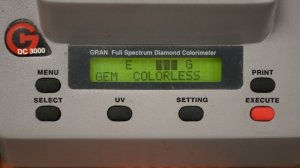- Joined
- Jan 11, 2006
- Messages
- 58,581
I see in a few posts a couple of pages back the topic of cut entered the conversation, and I wanted to express a few thoughts. I totally get why some people might want old diamonds just as some might want old (antique furniture). But what I want to say is, if I want a piece of antique furniture or an antique diamond, I want fine craftsmanship. I have seen pictures of some antique Tiffany pieces with large OEC's that were absolutely magnificent! They obviously were cut by master cutters. They couldn't possibly be considered wonky, and I would love, love, love to have them! (But I can't because they were larger, higher color, and mega expensive!)
I love old cuts, but I also appreciate fine light performance. There are some PSer's with finely cut OEC's. I realize there are also those who no longer really care about that and are happier with a charming old cut that might be a little wonky or out of round to me. But I need to make one thing clear. All AVR's are different. I think Jon has tried to choose some of the more desirable OEC appearances and develop the angle combinations needed to give them good light performance. That may be why they look similar, but they are not all identical like a ring cast in a mold or something. They aren't cookie cutter because they are HAND CUT and will have different angle combinations, tables, depths, etc.
Yoram is one of the finest cutters in the world, and my stone is hand cut. In fact, a stone like mine takes a lot longer to cut that a typical excellent round brilliant. I believe it will have even more value over time due to rarity and the fact that it is exceptionally well cut. I realize not everyone likes it, and that is fine.
My personal goal is not to buy stones that are either old or new; my goal is to buy fine craftsmanship in every diamond, colored stone, and jewelry piece that I buy. I don't discriminate based on age! (And I'd like to have a D color and a Y-Z color diamond to add to my collection so that I can say that I don't discriminate based on color. )
)
I love old cuts, but I also appreciate fine light performance. There are some PSer's with finely cut OEC's. I realize there are also those who no longer really care about that and are happier with a charming old cut that might be a little wonky or out of round to me. But I need to make one thing clear. All AVR's are different. I think Jon has tried to choose some of the more desirable OEC appearances and develop the angle combinations needed to give them good light performance. That may be why they look similar, but they are not all identical like a ring cast in a mold or something. They aren't cookie cutter because they are HAND CUT and will have different angle combinations, tables, depths, etc.
Yoram is one of the finest cutters in the world, and my stone is hand cut. In fact, a stone like mine takes a lot longer to cut that a typical excellent round brilliant. I believe it will have even more value over time due to rarity and the fact that it is exceptionally well cut. I realize not everyone likes it, and that is fine.
My personal goal is not to buy stones that are either old or new; my goal is to buy fine craftsmanship in every diamond, colored stone, and jewelry piece that I buy. I don't discriminate based on age! (And I'd like to have a D color and a Y-Z color diamond to add to my collection so that I can say that I don't discriminate based on color.





300x240.png)